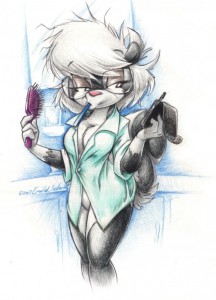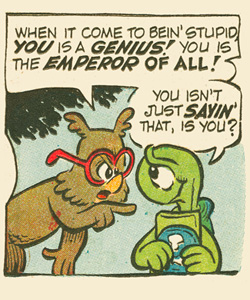
С высоты своей, довольно невысокой, горки опыта в комиксных делах, хочу сказать — этот комикс один из лучших. Уверен, так оно и останется, с горки любой другой высоты. Он почти так же крут, как Pogo, но, к сожалению, его намного меньше в объеме. Я проглотил его, суммарно, вечера за два.. Хорошо хоть, что он все еще продолжает выпускаться, правда, уж очень неторопливыми темпами — по четыре четырехкадровых стрипа в месяц.
Итого, таким вот образом за период с 1996 по 2009 было нарисовано 506 четырехкадровых стрипа, плюс несколько поздравлялок, плюс сопутствующий арт. Про переводы могу сказать не очень много — с ними, как всегда, довольно тухло. Существует один безымянный перевод, найденный на одном ftp, переведено хорошо, но очень мало, всего 197 стрипов (UPD: автор уже отыскался, оказалось, это небезызвестный NetDolphin). Есть альтернативный перевод, каких-то фурри-активистов, 298 стрипов и продолжают переводить (UPD: застопорилось на 626. Состояние на 2016 год). Положительных эмоций этот перевод у меня не вызвал, язык какой-то неживой, да и гарнитура шрифта подобрана совсем «не в кассу». Еще, по невнимательности, скачал с торрента, вместо английского оригинала, версию на итальянском — выходит и такие языки перекладывают… В общем еще одна жемчужина моей коллекции.
А еще автор делал по персонажам комикса короткометражные мультфильмы!
Sabrina In «Plight Of The Artist»
Sabrina in «Remote Possibilities»
«Amy the Squirrel — A walk in the Park»


